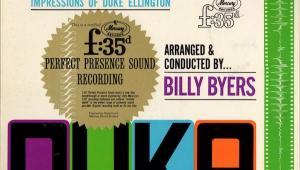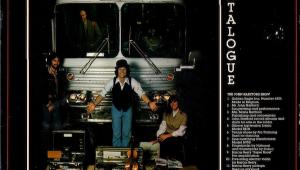From GZ's website. I seem to recall as similar opinion from some of the press material from Analog Productions. "After cutting the audio grooves on the lacquer substrate in the mastering studio, it is necessary to send the lacquer for further processing as soon as possible to avoid the loss of high frequencies in the grooves due to the delicate characteristics of the lacquer layer as well as damaging environmental effects." http://www.gzvinyl.com/Manufacturing/Metal-Work/Lacquers-processing.aspx
How Long Do Lacquers Really Last?

That company's owner Mike Esposito posted on his YouTube channel an over the top video attacking Supersense and making the absurd claim that lacquers rapidly deteriorate, which they do not. I won't here get into his video attacking ERC, which includes a great deal of misinformation and attacks audio reviewers too with the usual canard "They only post positive reviews".
This video refutes with evidence you will hear the uninformed and absolutely false story about the longevity of lacquers, claiming they "rapidly deteriorate" and turn to dust. They do not. Should a freshly cut lacquer meant to produce records be quickly plated? Yes of course. That's a different conversation. Worse he maliciously attacks the people at Supersense who in conjunction with UMG are releasing a series of lacquers cut from copies of master tapes. There's really no point in arguing about it because in this video the 27 and 16 year old oft-played lacquers do this "talking". Whether or not you want to spend circa $450 on one is another story.....But let's start with some truth....
- Log in or register to post comments


Now that the Tommy lacquer is worn out to dust, can I pick it up from your garbage when you discard it, PLEASE. I've heard of this lacquer making the rounds at shows and wow a standing ovation is deserved, so glad to finally listen to it, wish the remaining songs were possible. My English teacher was at Woodstock and played the Who cuts for a assignment and the lacquer cut reminded me of hearing it for the first time and being blown away!
I've been to many Who concerts since 12/14/1975 and own all the Classic Records reissues, originals upon release and have never heard the John, Rog, and Pete harmonies as this lacquer reproduces levels where you can distinctly identify each one. I always questioned how the in groove always slanted his review (opinion) as to what he could sell and how this lacquer video he was protecting and looking out for us but selling MFSL's on his site for absorbent prices and hoarding mono Beatles until they increase further. They turned me off while doing a video and mocked how a special needs person reacts when they show joy and happiness. Big spender on record collections and great Mattress salesman.

It’s EXORBITANT prices, not absorbent prices. Maybe it’s your spellcheck???

I have several Capitol Record lacquers that are 60 years old of William Steinberg, Felix Slatkin and Erich Leinsdorf with cutting instructions and they sound fabulous, live, better than the same vinyl issued LPs. Too bad I don't more than a half dozen.

In case you hadn't noticed, the In Groove YT on the lacquers that 'turn to dust" has been taken down from their site and you see a message "This video isn't available anymore".

the link seems to be broken. And there is plenty discussion going on there. The thing about having a youtube channel is that when you say stupid shit a lot of people get to call you out on it in public. His attemps to defend his undefendable assertions are not going well.

I'm thinking MoFi, Acoustic Sounds, etc will now start offering their Lacquers for super high prices as well. It's just another niche in the audiophile world. As with any other hobby (FLAOBT), people will purchase things that are limited in quantity. Just like with MQA, reviewers will toot the horn of the next big thing. It's what they do.

have already been selling on ebay from two sources for years now.

the whole matter doesn’t seem to be clear, instead at least controversial, as also mastering folks like Steve Hoffman (in his forum) blow the same horn as “The in groove”.

Not wholly about the longevity of lacquers but how many times they could be played before they no longer sound good? The whole concept is ridiculous to me. Why would anyone want an unused lacquer just to hide away and never play? At least a rare book or painting can be read and admired. What can you do with a lacquer? If the point is just to sell it sometime in the future, there are much better ways to make money.

Hey Michael, I hate to be a contrarian here in the comments of your blog, but let’s get into it. Why do you feel that it’s a different conversation that lacquers should be plated quickly if intended for production?
The same chemical and physical breakdown of the lacquer occurs whether it ends up in a nickel bath or on some collector’s shelf/turntable. We can’t ignore the facts here. A lacquer simply does not hold up over time, played frequently or otherwise. The high frequencies - that vinyl does so well and CD does not! - are the first thing to go. This may not be so apparent to many listeners particularly if their hearing has diminished with age, but it is a reality of life.
There is a reason why lacquers intended for production are NEVER played, not even with the most meticulously set up tonearm/cartridge, not even briefly. You won’t find a single mastering room in the world that does this. And there is a reason they are typically rushed into the plating room as quickly as possible. For my own releases I’ve gone to great lengths and additional expense to have my lacquers plated much more rapidly than even the “standard” or typical production pipeline would suggest.
Let’s not forget that they are much more delicate and sensitive to proper storage techniques as well. Not only to care for the lacquer coating but the metal substrate itself.
Best case scenario, let’s assume you were hypothetically able to play it thousands of times without any wear whatsoever, didn’t bend or warp the metal core due to uneven storage, etc… what happens over the years? The nitrocellulose lacquer coating contracts. It begins to peel and flake off the disc, taking your precious recording with it. If the surface forms fractures, ripples or distorts in any way, it is unplayable. And even assuming none of this happens? It WILL begin to sweat palmitic acid, a white waxy coating will begin growing from the disc’s surface.
Add in the difficulties studios have had sourcing lacquers after the 2020 Apollo fire, and mastering rates basically tripling over the past few years, and that is reason enough for me to have my own personal objections to what Supersense is doing. On top of all that, I can’t imagine why anybody would want a record cut from substandard tape copies, pressed OR cut directly. I have no objection to the price, in fact I think a product like this should probably cost more than it does, considering what goes into their production. I just don’t think it’s a sensible product, and I certainly don’t think it’s an audiophile product. My 2¢, for whatever that’s worth.

However your assertions that "what happens over the years? The nitrocellulose lacquer coating contracts. It begins to peel and flake off the disc, taking your precious recording with it. If the surface forms fractures, ripples or distorts in any way, it is unplayable. And even assuming none of this happens? It WILL begin to sweat palmitic acid, a white waxy coating will begin growing from the disc’s surface." Do seem to be in conflict with many examples, including the two Fremer demos in his video where these things simply are not happening. Hopefully we all agree that the laws of physics are uniform and consistant. How do explain those things not happening to the two examples Fremer showed us? Clearly those two lacquers were quite playable and relatively undamaged.They *may* have lost some high frequency information but I could not hear it in the demo. Certainly they did not lose so much high frequency info that one can detect it without a reference to judge against.

Lacquers have never been a product with great batch to batch consistency so it’s hard to predict the particular effects of severe aging on any particular disc and on what kind of timeframe that it will happen. Storage conditions also play a role. The only known is that it WILL happen. Not a matter of if, but when.
Mikey’s lacquers appear to be from the 90’s so still relatively “new” in the grand scheme of things. Maybe it’s just a trick of the light, it’s pretty hard to tell just from video but it does appear that one of them may already be taking on a matte appearance to the playing surface. This is still ancient by the standards of any lacquer that would be intended for plating though. If it sat around for a week, it has already been compromised. The groove wants to “spring back” and not hold its shape.
I have some lacquers from the 1940’s, coated on glass base due to the metal shortages during WWII. These weren’t known for their durability even when new, due to the fact that the coating did not want to adhere to the glass base like it does to metal… not to mention the fragility of the glass base itself!! These particular ones happen to be fine now. But what will they be like in 10 more years? Hard to say. I even have a lacquer from RVG’s studio in the 50’s, also still okay. On the other hand, I have plenty of lacquers from the same time period, if not newer that are shot and would be considered unplayable, at least not without severe cleaning if Palmitic Acid is the issue… which is no easy task considering the coating wants to remove itself from the base, or will swell in the presence of moisture. Some of my discs from the 60’s are younger than the discs from the 40’s in my previous example, but went bad much sooner.
In early 2018 I had a session with Ryan K. Smith at Sterling Sound (when they were still in Chelsea) and they were temporarily cutting projects to MDC lacquers due to a bad batch of Apollos they received at the time. We’re not even talking about the effects of aging now, that stock was as factory fresh as it gets. Fundamentally speaking, this is an unpredictable and chemically unstable product, there is just no escaping that.
Another point, if I may add - maybe the photo/movie buffs here are familiar with 35mm nitrate film? Or may have seen the theater scene at the end of Tarantino’s Inglourious Basterds? This is by and large the same thing in a different form. It’s pretty volatile stuff - Apollo can attest to that. It takes a very special kind of person to willingly bring that into the home. I should know, I’m one of them :)

"Lacquers have never been a product with great batch to batch consistency so it’s hard to predict the particular effects of severe aging on any particular disc and on what kind of timeframe that it will happen."
What do you mean by "inconsistancy?" Maybe I am wrong but my understanding is that the chemical makeup has actually remained remarkably unchanged over the decades. And I am not going to buy any attempt to argue that such chemical compounds are going to radically change in nature from batch to batch without some verifiable evidence. If one is going to make a blanket assertion about the life span of lacquers there can be no excpetions. Physics and chemestry do not have acceptions.
"Storage conditions also play a role."
No doubt. And anyone buys a $450..00 lacquer and stores it improperly or mishandles has no one to blame but themselves for what happens. It does not speak to the inherent life span of the product. Vinyl records improperly stored or handled get prtty messed up too.
"The only known is that it WILL happen. Not a matter of if, but when."
Absolutely. But the "when" seems to be what the debate here is about. Everything eventually decays.
"Mikey’s lacquers appear to be from the 90’s so still relatively “new” in the grand scheme of things."
Sorry but 20-30 years is far from "new" That Buddy Holly is pretty close to if not more than 30 years old. In 30 years I will be 89. If this product can last 30 years it will out last most of the people who buy them.
"Maybe it’s just a trick of the light, it’s pretty hard to tell just from video but it does appear that one of them may already be taking on a matte appearance to the playing surface."
So what trick did Fremer use in playing them? They sounded nearly new. Very few vinyl records are as quiet. I don't see any argument that they did not play very well after 20-30 years of natural aging. That is a factual piece of evidence that simply can not be ignored.
"This is still ancient by the standards of any lacquer that would be intended for plating though. If it sat around for a week, it has already been compromised. The groove wants to “spring back” and not hold its shape."
And based on listening how "compromised" would you say these 20-30 year old lacquers actually are relative to what we get across the spectrum from vinyl playback? I would say they aren't so compromised that I could detect ANY degredation without a direct comparison to a reference. Pretty far cry from being unplayable.

The compressed audio in a YouTube video is just about as low-res as it gets, so I will refrain from making any judgements on whatever high frequency losses may have occurred. But I will say that there was noticeable sibilance/distortion in the “Pinball Wizard” clip, the unmistakable sound of groove wear. This is something you just can’t escape with lacquer, and I wouldn’t by any means call this disc unenjoyable. If you want to hear Tommy at 45 you don’t have any other option anyway, the 45 cut was never released! So it’s cool that you get to spin it and still do. Very enviable position to be in. But at the same time I would stress to others that we can’t be ignorant of the physics at play here.
The 1995 Kevin Gray lacquer is starting to sweat palmitic acid, although it is only briefly seen in the video I am fairly confident that is what I am seeing deposited on the un-cut back surface aside from just general fingerprints/handling marks. The playing surface also appears to be taking on a “rougher” appearance.
More concerning is the fact that both discs have physically deformed, as can be witnessed by the topsy-turvey motion they’re making. You practically shouldn’t even be able to tell they are spinning. If you see visible motion while cutting or playing a lacquer, something went very wrong.. If there is any benefit to playing lacquers, the biggest one has to be that they are always (or should be) uniformly flat and perfectly concentric in a way that is simply unachievable with ANY pressed record. That benefit is most definitely lost here.
I think MoFi’s “One Step” approach is also somewhat nonsensical, if only to a lesser degree, but I don’t think producing a small number of carefully produced lacquers, direct from original masters, all intended for plating/production so they can make thousands of very good long-lasting records is really comparable to some company making a dozen or more mediocre lacquers for a select few that are only getting worse with age before they even leave the shop.

I have no horse in this race, it is just a cool topic to discuss.
The ‘legend’ of lacquers, to my recollection, has been that longevity is not something I would expect!
Devialet has released some lacquers and their initial pitch was that these are a ‘one and done’ product. Now we have 60 year old lacquers that seem to obviously contradict that notion.
From Devialet via What Hi Fi…
https://www.whathifi.com/amp/features/devialet-and-art-impermanence
From Devialet:
“Usually when a record is made, the lacquers are used for production rather than for listening because its softness means the grooves are worn off as it’s played. Which adds that fleeting quality that makes it, philosophically speaking, as similar as a recording can be to a live performance.”
So, here’s someone who makes records talking about the ephemeral nature of lacquers; is he wrong?
I dunno! More to learn!

Sadly, for me, your version recorded and sent by YouTube sounded better than my copy played at home. My LSO version is almost too spacious, but I have always enjoyed it.
My 2 cents. It seems that the key is care in playing and storage.

From an interview/article about the Devialet lacquers…
“Created from aluminium, coated with nitrocellulose lacquer and spanning 14” with a blue edge, there have been a limited number of lacquers of each album produced for sale. Limited to 30 sets for each title release with multiple lacquers forming the entire album, the Vaughan, Peterson and Brubeck sets (of four discs in each) will cost you £6,300 per set. The Evans (of just two discs) will cost £4,500. This is a lacquer, though, which means that the sound quality will be far superior even to the released limited edition vinyl but – and here’s the kick – the surface is very soft. Play it once, just once, and the stylus will distort the medium. It will never sound that good ever again yet, because it is the lacquer, this is the best way to hear this LP. You’re looking at a one hit experience, though.”
Link:
https://theaudiophileman.com/devialet-fond/
Interestingly, there are several lacquer types. Maybe some are tougher?

From Master Disk…
https://masterdisk.com/blog/2018/1/2/the-process-and-jargon-of-vinyl
“Lacquers cut as reference lacquers are sometimes referred to acetates. In either case, they can be played by normal turntables. Lacquers cut as masters should not be played. They are soft and even a careful needle drop will cause a very loud pop on every copy of the record.“
I think maybe we are talking about different ‘lacquers.’
Some made to play and some not?

This was true at one point in history, with several brands and many different grades of blanks in their product lineup. But today, there is only MDC, and as far as I’m aware there is no difference in their formulation or specification of the coating. The only difference would be the size of the discs that are intended for reference playback, or “acetates” as they’re sometimes referred to. To press a 12” LP you’d have to cut and plate a 14” disc, something not many turntables would be capable of playing back. So the 12” blanks are expressly intended for this purpose.

“Maybe I am wrong but my understanding is that the chemical makeup has actually remained remarkably unchanged over the decades.“
No, this wasn’t even true within one manufacturer’s product lineup, let alone in comparison to another manufacturer’s lineup. At one point in time there were several different brands and grades of blanks available. In more recent years, there was only Apollo/Transco and MDC. And now, only MDC. Any mastering engineer will tell you the Apollo and MDC blanks were very different beasts. Not only do they cut differently and sound different from eachother, but they plate differently too. The exact formulas are probably a closely guarded secret.
“I am not going to buy any attempt to argue that such chemical compounds are going to radically change in nature from batch to batch without some verifiable evidence.”
As I demonstrated via the anecdote in my previous comment, batch to batch variation was the nature of the beast. You may be able to contact other industry professionals if you seek any further evidence or statements on the matter.
For that matter, you can have pretty much any mastering engineer you want make you a test cut with any prepared source material or tones of your choosing. Perhaps for not much more than one of these Supersense lacquers may cost. Feel free to do this to gain whatever evidence you deem necessary. Make recordings of repeated plays so you can monitor the gradual degradation of the audio. See how the disc ages. Then do it again in a year or two to see if the latest batch of discs behave any differently. This may be the best way to judge the merits of releasing an album on lacquers. There is no substitute for personal experience :)

why would I need to have someone cut a lacquer for me when we have Fremer's demo? Those lacquers are vintage and played really well. Why should we suspect the ones being marketed will fail when these two examples clearly have not? Two different lacquers from two different mastering facilities cut years apart. Yes, we do know that lacquers are more fragile and will degrade with each play. But what actual evidence do we have that these particular lacquers will spontaniously decay and become unplayable in short time when we have two clear examples of that NOT happening?

“Why should we suspect the ones being marketed will fail when these two examples clearly have not? “
On the other hand, why take the two lacquers that Mikey played as proof that lacquers generally will not deteriorate? This is simply his experience, merely anecdotal and not necessarily representative of most lacquers. Playing two lacquers from the 90s is hardly irrefutable proof that most lacquers are fine after 30 years.

Because they did not fail. when something will inherently fail because of the physical nature of that object there will be NO exceptions. That is basic science. Falsifiability is not incremental. If I say there is no Big Foot because there are millions of anecdotes and no physical evidence I am making a very strong argument. If you subsequently produce in the flesh two Big Foots that kills my argument. DEAD. Even if they are extremely rare. If you produce evidence that they exist the evidence can't be argued away. Of course no one is going to show up with two actual Big Foots. But Fremer did show up with two examples of vintage lacquers that have not fallen apart, become unplayable or even suffer from substantial noise. How can anyone NOT take that as evidence of the inherent life span of lacquers? It is not "his experience" it is not anecodtal! It is verifiable objective evidence. It may not be "irrefutable proof that *MOST* lacquers are fine after 30 years" (whatever "fine" is supposed to mean) It is however irrefutable proof that the inherent life span is at least as good as these two examples if not better. So again I would ask you what evidence do you have that would tell us the product in question will behave differently than these two lacquers? Real evidence. Not anecdotal. On a side note I continue to be shocked by what some folks think is anecdotal evidence and what is objective verifiable evidence.

Sorry, but your comments defending Fremer, to me, seem a bit obsequious. Just because Fremer says it, doesn’t make it gospel. You hear two records and you’re convinced? Glad you’re not working on the new vaccines…

It has nothing to do with Fremer. I am defending reasonable processing of objective evidence. Something that is clearly shunned by many in the world of audio. You claim the evidence that Fremer presented was anecdotal. Maybe you don't know what that means? Anecdotal. "(of an account) not necessarily true or reliable, because based on personal accounts rather than facts or research." He presented objective evidence. That's the opposite of "gospel" And yes I hear two records and I am convinced that they represent the minimum *inherent* life span of the medium. How the can they not? Again, there are no exceptions to a rules of phsyics. That you would compare this kind of physical evidence with something like vaccine research and development demonstrates a fundimental misunderstanding of how evidence is examined in clinical medical trials vs physics. Unless Fremer was faking the whole thing there really is no question that just one 30 year old lacquer that has not fallen apart, is still playable and has relatively little noise is proof that a lacquer can last up to 30 years without falling apart, still be playable and have little noise. Do you not understand the plain obviousness of that? Do you not understand that all clinical trials are loaded with all kinds of variables both known and unknown? And that when we are talking about how humans respond to complex treatments that there are is often a broad spectrum of effectiveness and reactions? It's an absurd analogy.

of course we now know that they face eminent spontanious implosion. They have been played at least twice right? Game over man!

Michael, do you still have that Art Blakey & the Jazz Messengers "A Night in Tunisia" lacquer? You played it at an event at Innovative Audio. It sounded amazing.

If I may quote Artie, from 2015:
"Ledermann would also have you know that, because of its incomparably low moving mass and its freedom from the mechanical compression that bedevils electromagnetic cartridges, the Soundsmith Strain Gauge cartridge is an incomparably good tracker. Indeed, he says, the Strain Gauge is kinder than most cartridges to one's records, a claim he illustrated by playing for me a record that not only had lots of bass, treble, and sheer juice, but that exhibited not a single tick or pop. Except it wasn't a record—it was a half-speed–mastered lacquer. While a typical lacquer can't be played more than a few times before audible groove damage sets in, Ledermann said that this lacquer had been played approximately 150 times—but only with a Soundsmith Strain Gauge."

from New Zealand. The polycarbonate records were limited edition artist pressings. Check them out on the link below.
http://peterkinglathecutrecords.co.nz/history.htm

I’m not sure the In Groove video or its owner deserves quite this level of tongue lashing. Even though incorrect, he was simply trying to provide information to his viewers. He is also a small record store owner, so deserves support. His channel is also excellent. Subscribe if you haven’t already.

I don't doubt his sincerlity or good intentions. But if one presents themselves on a public forum such as youtube as a knowledgable source of objective information and is getting basic facts wrong they deserve to be called out. That he continues to hang on to his assertions despite the evidence shoved in his face makes him deserving of every tongue lashing he is getting. Just my opinion. I wish him all the success as an independent record store owner. I really do. That is a terrific service. But bullshit is bullshit. Even when the guy shovelling it is a sympathetic character.

is perhaps by the guy who just happens to be getting free records from the guys he’s defending. Ever think of that? In any event, Mike has since posted his own rebuttal, and he is absolutely correct.

Some of his tribesmen seem t o be conspiracy theorists as well.

"... bullshit is bullshit. Even when the guy shoveling it is a sympathetic character."
This phrase should be taught in every school.

If you actually sat there and watched his videos claiming you will get two plays and then the lacquer will implode (literally what he claimed) while he was holding a pristine lacquer in his hands from 1988 that was improperly stored no less and believed him even after watching Fremer's demo with other vintage lacquers then there is no help for you. You are a true believer in his cult. Also if you don't see the utter irony of somebody who makes their living off of buying and selling records accusing someone else of being dishonest because they have a vested financial interest in the buying and selling of records I can only quote Ron White. "you can't fix stupid."

Fremmer’s reaction to Mike’s video was over the top, and many people have called him on it. Mike from The In Groove regularly gives his viewers honest assessments of new releases, including negative ones that in turn mean lost business for him. He has no skin in this particular release. You are right about one thing though, you can’t fix stupid.

correct me if I am wrong but his reaction was "you're wrong." It may be brief but it is hardly over the top. It cuts to the chase and states a simple fact. He WAS wrong.

I haven’t seen the In Groove’s original video so I can’t really pass any judgement on whatever may have been the exact quote, but all this talk about “turning to dust” and “imploding” are not much more than highly exaggerated strawman arguments. It has been well understood for decades exactly what lacquers do, how they age, and how they stand up to repeated play. So I’m not sure why anybody would be so desperate to find evidence to the contrary. Michael’s video shows this clearly enough - sure, they sound fine (now, at least - try again in another 10 years) but both lacquers demonstrated here are visibly/audibly degraded. And at “only” 25/15 years old. The records in my collection that are 25 years old or younger are by far the newest records in the collection, so, no, I would not be interested in a $400 product that will have a lifespan a fraction of the cheaper product which will sound every bit as good as the lacquer it was made from, and will continue to do so over time. Even if you make them the same price I will still pick the pressed record, because selling lacquers as an audiophile product is fundamentally nonsensical.

Lacquers as they are called are different from acetates. Do lacquers last as long as PVC (vinyl records)? No, but they can last a good couple of decades or more with proper care. I have heard portions of the arguments here about vinyl records as well. To me it is just people making arguments for the sake of arguing. Anyone with a 6th grade education in chemistry can figure it out.
Lacquers and especially acetates require more special care than vinyl records, but with such care they will last a while. All three, lacquers, acetates and vinyl records will always outlast master tapes, cassette tapes and reel to reel. It is simply natural due to the materials. Lacquers are brittle, but can be cleaned ultrasonically at the right frequency and time duration. Acetates however, are very delicate and even under good care don't hold up over time.
I have never seen a lacquer disintegrate in front of me, nor a vinyl record or even an acetate. I have seen tapes do that though after 20 years.
I don't know of any sonic superiority to lacquers or what have you, I doubt there is.
So this fight is a hundred years old rehash in my opinion.

Saw your informative and cordial video yesterday. Great job to all. I have to say that the lacquer issue is an odd one. How to you judge ones personal listening experience? I take the family out for dinner at a nice place and it costs me 300$. Did I throw that $$ away? Would I do it all the time...nope. Would I buy a lacquer for 500$..nope. But some would not do dinner either...right? Going out to the movies with the family is about 150$ or so. Can I keep the movie..nope. I go to a concert with my spouse and it costs me 500$ between seats tshirts programs beverages etc. If my thing is being able to hear the most beautiful and realistic version of my favorite recording...then to each his or her own. IMO.


















































